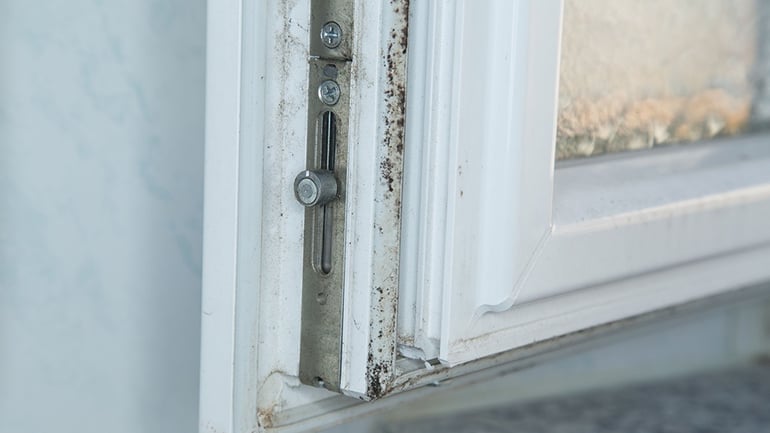
Mold appears as the result of a damp environment. If your window A/C unit has mold on it, that means you're at risk for health problems and a costly replacement.
To fix this problem, Warner Service is offering some expert prevention tips:
Buy a unit with humidity control. Many window A/C units come with a humidity control option. This option allows the air conditioning unit to control the level of humidity in the air, automatically discouraging the growth of mold.
Use “auto” mode. When you leave for family vacation, don’t turn your unit off. This leaves your home without airflow, causing moisture to build up without circulation and temperatures to rise without an active cooling system. Warm, moist, and stale air is the perfect environment for mold to grow.
Instead, use the “auto” function on your air conditioning unit. This will continuously cycle the air in your home while you’re away for a long period of time.
Perform (or schedule) regular maintenance. HVAC maintenance is so important, especially during the shift in seasons. It allows your heating and cooling system to prepare for the change in weather before it’s too late.
Because window A/C units are dark and warm on the inside, it's a great mold breeding ground. Preventing this requires basic HVAC maintenance, including checking it regularly and carefully cleaning any sign of water or formed mold.
A more thorough cleaning is also required but is best left to a professional technician. They’ll conduct a deep inspection similar to Warner Service’s and teach you how to properly maintain and care for them.
Get rid of dust. Dust helps mold grow on your unit. If you need help with dust prevention, check out Warner Service’s 16 Ways To Clean Dust In Your Home, How To Get Rid Of Dust, and 15 Solutions To Controlling Dust In Your Home.
How To Tell If Your Unit Has Mold
- You can see mold growth on the unit or the air filter.
- You can smell something musty when you turn on the air conditioner. (This is from chemicals called microbial volatile organic compounds.)
- You experience symptoms of mold-related illnesses, including shortness of breath, wheezing, coughing, sneezing, snoring (if you don’t normally snore), rashes, itchy skin, asthma attacks, irritated eyes, sore throat, headaches, respiratory infections, and fatigue.
How To Clean A/C Unit Mold
- Put on a face mask, eyewear, and protective gloves.
- Turn off and unplug the unit.
- Take off the front body grille.
- Remove the air filter on the front body grille.
- Dispose of and replace the filter, or wash it with laundry detergent and hot water. Soak for 15 minutes and use a scrub brush to clean.
- Unscrew the metal cover behind the front body grille, and lift it directly upward.
- Use a vacuum attachments to clean out debris from the unit’s interior.
- Wipe any visible mold growth.
- In a bucket, mix ½ cup bleach, 1 tablespoon mild dish soap, and 3 gallons hot water.
- Use a cloth, brush, or sponge to soak up the solution.
- Scrub the moldy areas of your air conditioner well, and clean the air conditioner front grille if it’s moldy.
- Allow the solution to sit for approximately ten minutes, then rinse with water and a damp cloth.
- Let the unit, air filter, grille, and metal cover dry completely.
- Reassemble the air conditioning unit, and plug it back in.
Did you know that the first air conditioner was made to dry ink and keep paper straight in a printing press room? The HVAC component was designed to wick away moisture, and in turn, prevent mold growth.
To keep window A/C units clean, run it constantly and perform (or schedule) regular maintenance like dusting and clearing water. For more information about HVAC maintenance, download Warner Service’s checklist today:



